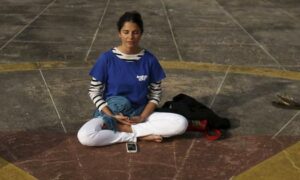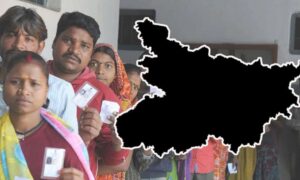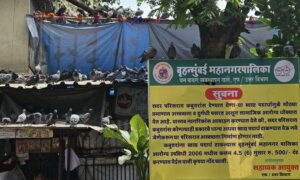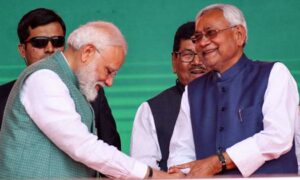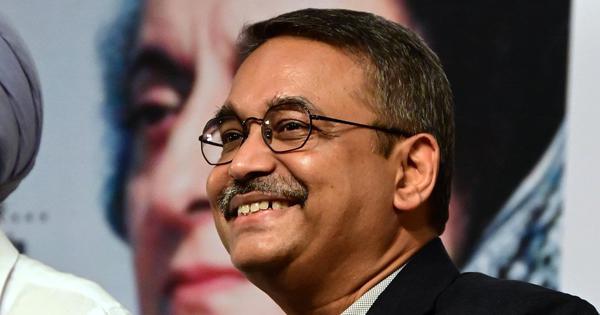
We live in a world where genocide is celebrated. We live in a world of mass-produced opinions. We live in a world of crumbling moral frameworks. We live in a world where the very game – this brutal game of existence – is rigged.
What then? Do we call it a day? Do we fight on despite knowing that the powers that be will always win? Do we resist for the sake of resistance itself? Do we defy without any end goal in sight?
Sugata Srinivasaraju’s The Conscience Network: A Chronicle of Resistance to a Dictatorship, is, among many things, an answer to these questions.
Resisting dictatorship
Over 110,000 people – students, activists, opposition leaders, ordinary citizens – vanished from open society into detention centres without any trial when the Emergency was declared. At the centre of this “constitutional” massacre was Indira Gandhi, then the prime minister of India.
Across India, despite everything, resistance bloomed in many shapes and forms: underground newspapers began circulating, universities became centres of resistance as students, professors, and workers formed an unlikely union in the face of the State. Surprisingly, though, some of the strongest resistance came, not from the streets of Delhi, but from American suburbs.
The Conscience Network tracks one of the most sustained challenges to this dictatorial rule. It’s the story of Indians for Democracy (or IFD), who, from a loose collection of concerned diasporic Indians, created a sophisticated and effective transnational activist network. When censorship blinded the world to the atrocities of the Emergency, the IFD became its eyes. When the Indian press was silenced, they became its voice abroad. The movement mobilised masses across the US (and beyond) and created global awareness and intent, building pressure on the then Indian government.
From Noam Chomsky and Arthur Ashe to Allen Ginsberg and Roger Baldwin, distinguished voices from all walks of life spoke up publicly the Emergency.
But who exactly were the IFD?
To quote Srinivasaraju, they were “an enlightened section of civil society who fought the good fight […] from disparate academic and professional backgrounds, and from diverse cultural, economic and linguistic environments.”
We start with Anand Kumar, a sociology PhD, whose activism had already cost him his place at BHU, and a dedicated volunteer in the JP movement. Then Ravi Chopra, the metallurgist from IIT Bombay, who sought scientific solutions to India’s social realities, and had once tried to grow tomatoes in plastic containers on windowsills. SR Hiremath had walked the Indian immigrant’s classic trajectory – engineering degree to commercial success – until Schumacher’s alternative economics philosophy redirected his focus toward sustainable development and social justice. His wife, Mavis Sigwalt, raised on a small farm in west central Iowa, was a Peace Corps volunteer turned Gandhian social worker. The last rung of this diverse coalition was Shrikumar Poddar, one of the most influential 20th-century Indians in the US, whose corporate success and influence provided both the financial resources and institutional credibility that transformed expatriate anger into organised opposition.
But resistance, even from afar, exacted its toll. Impounded passports, cancelled scholarships, defamation campaigns, and the arrests of family members were some of the many consequences for these Indians outside India. And here lies the fundamental question: why choose this path at all? Do you resist for the sake of resistance itself?
Srinivasaraju frames their dilemma: “They could have just heard it and continued with the research and teaching they were doing; after all, they were in the safety of another country. The apolitical distance their middle-class families maintained back in India ensured that the crisis was not personal to them.” Keep your head down, build your life, let others fight others’ battles. Why choose suffering when comfort was an option?
Srinivasaraju answers his own question, for “to be impervious was not their art. That was not how they were made.”
This fight also holds the evolving sentiment of how Indians understood themselves and their democracy. You realise the value of freedom most acutely when it’s taken away. You understand the importance of choice when it’s no longer available. You learn the necessity of a republic when it ceases to be one. For these diaspora activists, as well as many back home, the Emergency became their political education on how democracy needs to be sustained by conscious and constant resistance. “It was the beginning of an understanding that more than nostalgia for the freedom movement and its eclectic values, the spirit and word of the Constitution might end up being the final saviour of the republic,” writes Srinivasaraju.
The pride of an elephant
But what use is the structure if there’s no soul? Srinivasaraju’s search for a compelling story takes us across lives and continents. He allows the story to go where it seeks to go, even if it means spending thirty pages on something another author might have reduced to a footnote. More than efficiency, he’s interested in truth, and truth, as it happens, is messy, nonlinear. Curiosity is the driving force, in turn bringing out fascinating stories and unforgettable characters.
This leads to tangents one might otherwise miss. For instance, one section asks if the reason Gandhi’s rule was despised so much was because of her gender. He quotes Mavis, “Would people have bothered so much about the Emergency if a male prime minister had imposed it?” After all, her father, Jawaharlal Nehru, too, had imposed an Emergency during the India-China war in 1962. Srinivasaraju digs deeper, “Indira Gandhi was strong, independent, ruthless and decisive – traits that patriarchy usually did not associate with women. This made the Mavis question relevant: Was it about men not wanting a woman to be tough, while they would readily accept such an attitude in a man.”
This anarchic approach to storytelling – one may even call it Gandhian – finds its perfect partner in elegant prose. Highlighting the dilemma of an activist against the immovable State, Srinivasaraju writes, “Could the ant ever shatter the might and pride of an elephant, or was it only a convenient fable that perversely filled up confidence in the powerless?” Or, in a passage on memory and preservation, he says, “One wonders if people preserve their old notes, cards and letters, in the forgotten corners of their desks, cupboards, basements, lofts and garages because they want them, from time to time, to authenticate their own lives for an autobiography they are constantly revising in the attics of their mind.”
The Conscience Network is essential reading for this moment in history – and any moment in history – because it understands that resistance is less to do with changing the world and everything to do with preventing the world from changing who you are. Our protagonists had no illusions about single-handedly reviving Indian democracy, but they also knew that silence would have meant complicity. The story preserves something fundamental to humanity: that ordinary humans can choose extraordinary courage, that sometimes preserving conscience is the only victory that matters.
The game is rigged. Some games, though, are worth losing on your own terms.
The Conscience Network: A Chronicle of Resistance to a Dictatorship, Sugata Srinivasaraju, Penguin India.
📰 Crime Today News is proudly sponsored by DRYFRUIT & CO – A Brand by eFabby Global LLC
Design & Developed by Yes Mom Hosting

